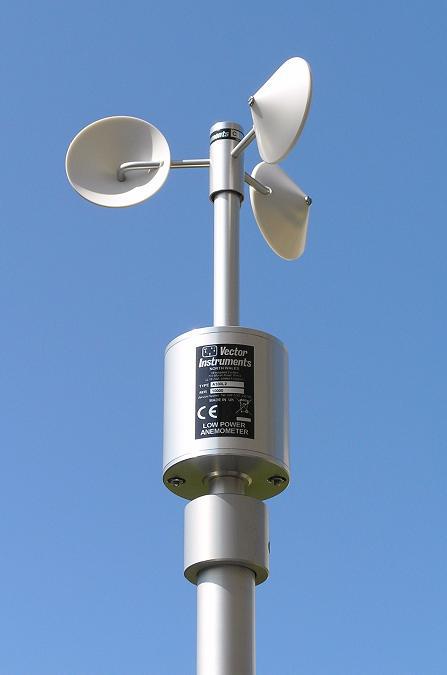How an Anemometer Can Enhance Your Weather Monitoring System
How an Anemometer Can Enhance Your Weather Monitoring System
Blog Article
Anemometers Unveiled: Understanding Their Importance in Environmental Tracking and Precaution
The duty of anemometers in ecological tracking and safety actions is typically undervalued, yet their relevance is undeniable. From weather forecasting to aviation safety and security, anemometers play a critical role in giving accurate information that informs decision-making procedures and boosts total security.
Background of Anemometers
The advancement of anemometers can be traced back to the ancient human beings where primary wind determining gadgets were initial utilized. One of the earliest recognized anemometers was the hemispherical mug anemometer invented by Leon Battista Alberti in the 15th century.
Over the years, improvements in innovation led to the advancement of more contemporary anemometers, including ultrasonic anemometers and laser Doppler anemometers, offering boosted accuracy and performance in gauging wind rate and instructions. The history of anemometers showcases an impressive journey of advancement and progression in the field of meteorology.
Sorts Of Anemometers
Throughout the area of weather forecasting, different sorts of anemometers have actually been established to precisely measure wind rate and instructions. The most typical kind is the cup anemometer, which is composed of three or four cups placed on straight arms that turn with the wind. As the mugs spin, the rate at which they revolve is directly proportional to the wind rate. An additional commonly utilized type is the vane anemometer, which features a tail or fin that straightens itself with the wind direction. This placement allows the tool to figure out the wind direction. Sonic anemometers make use of ultrasonic signals to determine wind rate and direction accurately. They are commonly made use of in research study applications as a result of their high accuracy. Hot-wire anemometers run based upon the principle that the cooling impact of wind on a warmed wire is symmetrical to the wind speed. These anemometers appropriate for determining low wind rates with high accuracy. Each kind of anemometer has its strengths and is picked based on the particular demands of the surveillance task handy.
Applications in Meteorology
Having reviewed the different kinds of anemometers used in weather forecasting for determining wind speed and direction, it is necessary to explore their useful applications in the area. Anemometers play a critical role in meteorology by offering precise and real-time information on wind problems (anemometer). Meteorologists use anemometers to keep track of wind speed and direction to forecast weather patterns, problem cautions for serious weather condition occasions like twisters, storms, and typhoons, and analyze climatic problems for air travel safety and security
In meteorology, anemometers assist in recognizing local and regional wind patterns, which are crucial for anticipating weather modifications and figuring out climatic trends. These tools are additionally used in research to study microclimates, urban warmth islands, and air pollution diffusion. In addition, anemometers are employed in farming to enhance crop monitoring practices, such as watering and chemical application, based on wind problems.
Significance in Air Travel Safety
An essential facet of making sure aviation security hinges on the precise surveillance of wind problems using anemometers. Anemometers play a critical role in aeronautics by providing real-time data on wind rate and direction, assisting pilots in making notified choices throughout liftoff, landing, and trip. Uncertain and strong winds can significantly affect airplane operations, making it important for aeronautics authorities to rely on precise wind dimensions to make sure the security of travelers and staff.

In the dynamic environment of air travel, where also minor changes in wind speed and instructions can have profound impacts, anemometers stand as important devices for promoting risk-free and secure flight.
Duty in Environmental Research Study
Anemometers play a crucial function in environmental research study by supplying crucial data on wind speed and direction. By precisely determining wind attributes, anemometers aid scientists analyze the motion of contaminants in the air, examine the effect of industrial discharges, and anticipate the spread of impurities in the setting.


Conclusion
In final thought, anemometers have played a crucial duty in ecological surveillance and security measures. Recognizing the relevance of anemometers is important for accurately determining wind speed and instructions, which is crucial for predicting climate patterns, making sure risk-free air travel procedures, and carrying out ecological research studies.
One of the earliest known anemometers was the hemispherical mug anemometer created by Leon Battista Alberti in continue reading this the 15th century. Over the years, advancements in technology led to the growth of more modern-day anemometers, including ultrasonic anemometers and laser Doppler anemometers, using raised precision and performance in measuring wind rate and instructions. Hot-wire anemometers operate based on the principle that the cooling result of wind on a heated cable is symmetrical Home Page to the wind speed. Meteorologists utilize anemometers to monitor wind rate and direction to forecast climate patterns, issue warnings for extreme climate events like tornados, hurricanes, and twisters, and examine climatic conditions for aeronautics safety.
Recognizing the value of anemometers is vital for properly gauging wind rate and instructions, which is vital for predicting weather condition patterns, making certain secure aviation procedures, and conducting environmental research studies. (anemometer)
Report this page